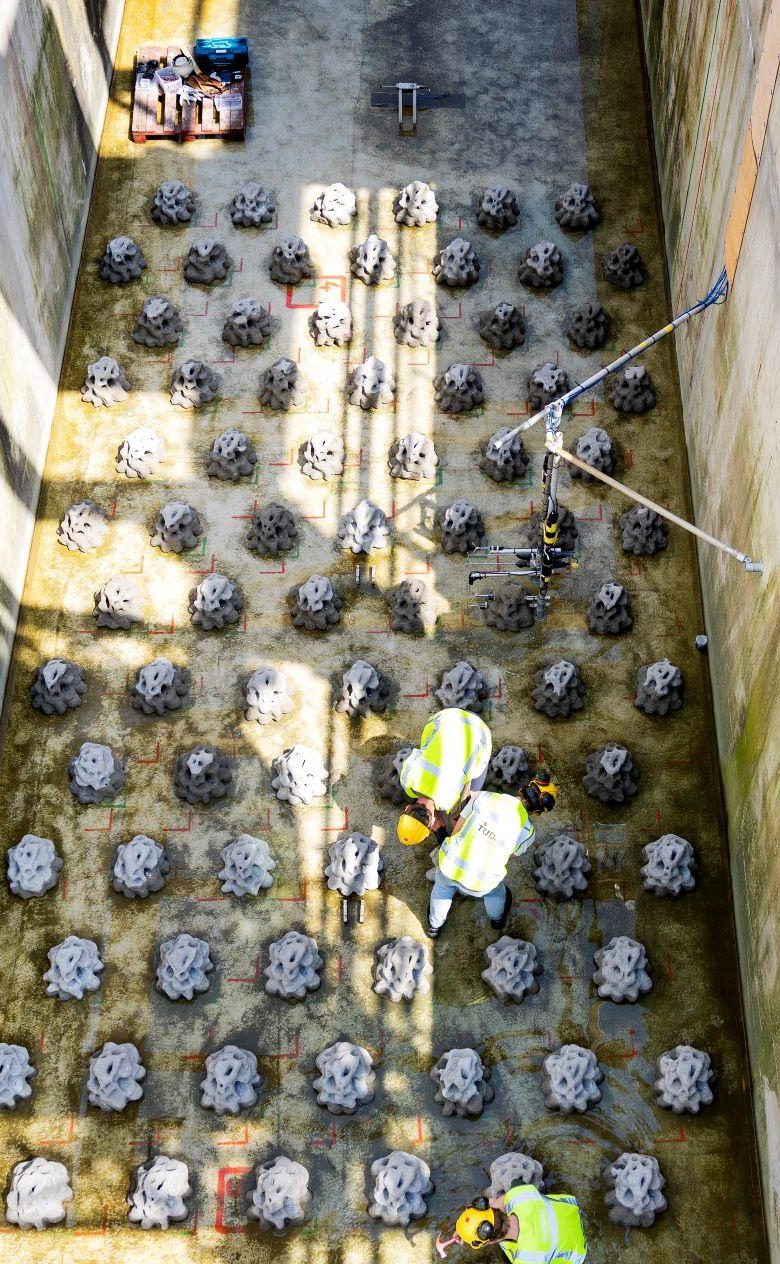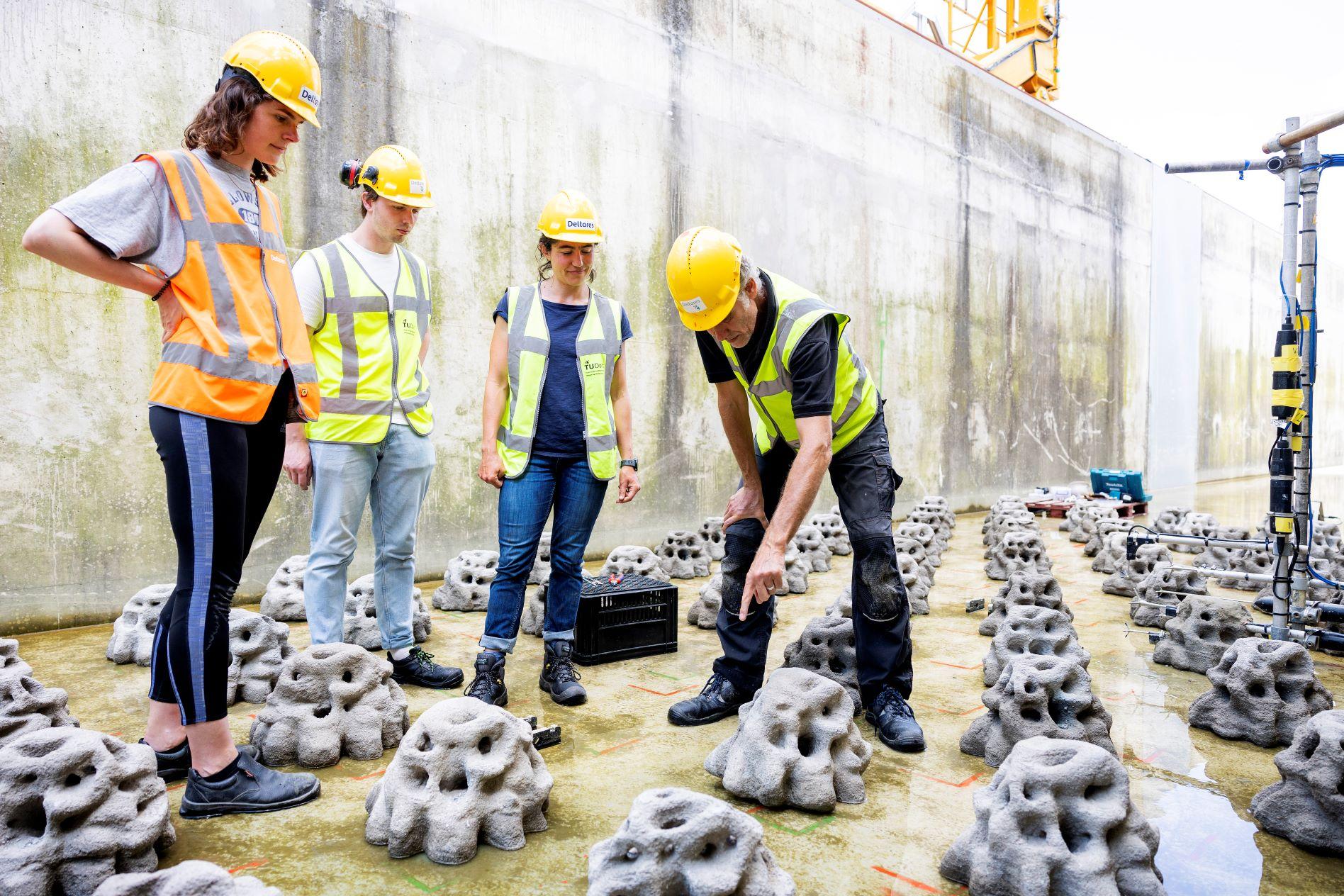Impact sea level rise atoll islands examined with scale model
Scientists, amongst which Deltares experts, have built a 50-metre scale replica of a coral reef island to explore how its real-life counterparts might be impacted by rising sea levels. The model has been designed to mimic atoll islands in the Maldives and the Pacific Ocean, thought to be among the most vulnerable parts of the planet as the climate changes.

Over the coming two months, it will be subjected to varying wave and sea-level conditions, with its response being intensely monitored using wave sensors, current meters, video cameras and laser scanners.
Researchers hope the experiment, combined with fieldwork and numerical modelling, will give them an indication of precisely how the islands might respond if sea levels and the frequency of extreme weather events continue to increase.
ARISE project
The experiment forms part of the ARISE project, a five-year £2.8million project led by the University of Plymouth and funded through UK Research and Innovation’s Horizon Europe Guarantee programme. With partners across the world, including organisations in the Maldives and the Pacific, the project is exploring the potential for the world’s low-lying coral atoll islands to survive predicted rises in sea level through natural flooding processes.
Professor Gerd Masselink, Professor of Coastal Geomorphology at the University of Plymouth and lead of the ARISE project, said: “It is virtually impossible to record waves washing over a real atoll island, because the chances of an extreme event occurring on an instrumented island is very rare – you’d have to be instrumenting at least tens of islands spread across the Maldives and the Pacific to ‘catch’ it.
This scale model will give us the opportunity to run a controlled series of scenarios and monitor with a range of instruments how the island might respond in a variety of present and future sea conditions. Combined with other measurements from the field, we hope it will give us a clear understanding of if – and how – these communities can survive in future.”

Deltares Delta Flume
The experiment is a collaboration between the University of Plymouth, Delft University of Technology, and Deltares. It will take place in the Deltares Delta Flume, the world’s largest wave flume. Measuring 300m long, 9m deep and 5m wide, and with the ability to generate waves up to 2m high, the flume is the perfect place for this particular experiment.
It will also enable the researchers to evaluate the impact of artificial reef structures in reducing the energy of the waves reaching the island shoreline. Such structures are increasingly being used as eco-friendly coastal defences that provide habitats for marine life as well as protecting island shorelines.
Scale model reef
Dr Marion Tissier, Assistant Professor of Coastal Waves at Delft University of Technology, said: “Coral reefs naturally protect atoll islands from wave-driven flooding, but unfortunately, they are degrading worldwide. This experiment provides a unique opportunity to investigate the efficiency of reef restoration for coastal protection.
Coastruction designed and created 150 eco-friendly, complex-shaped artificial reef structures, which will be installed on the reef of the scale model, and their effect on the waves will be systematically analysed. The large scale of this experiment is essential, as it allows us to get a realistic picture of how water moves through these complex structures, and thus of how the structures influence the wave field and ultimately flooding at the island.”
Suzanna Zwanenburg, project leader of the Deltares Delta Flume, added: “We have built a scale model of a reef platform with an atoll island in the Deltares Delta Flume. With this unique, experimental facility, we can generate the largest artificial waves in the world, which makes it the perfect place to assess the effect of waves washing over an atoll island.
The model is equipped with numerous sensors, which gives us detailed information about the wave heights, velocities and pressures along the reef platform and the overwash over the atoll island.”

The island of Dighelaabadhoo
The new experiment is being launched weeks after scientists returned from the Maldives, where they deployed more than 80 individual instruments on the island of Dighelaabadhoo as they seek to capture in-depth information about the energetic wave conditions during southwest monsoon season in the Indian Ocean.
The measurements generated by the instrumentation will constitute the largest field campaign ever to be staged on an atoll island, and the instruments will remain deployed until August.
You have not yet indicated whether you want to accept or reject cookies. This means that this element cannot be displayed.
Or go directly to:

